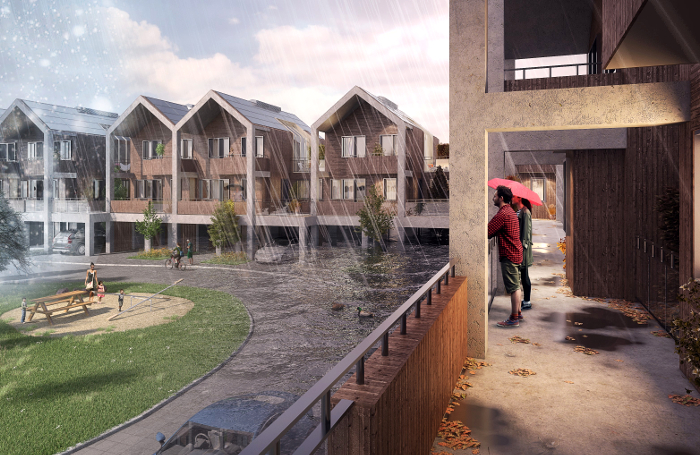One in six homes in the UK is at risk of flooding - a figure that is expected to double within 30 years, according to the UK’s Environment Agency. It is timely that CIRIA (the Construction Industry Research and Information Association) has recently published a Code of Practice for property flood resilience (PFR).
The code's principles can be applied to existing or new build properties to prevent or reduce flood damage and speed up recovery time. It provides guidance on remedial repair after a flooding event, but its standards can be used to improve the flood resilience of a property at any stage.
A major piece of work, the code was funded and endorsed by the Environment Agency as an output of the Property Flood Resilience Roundtable. It is now free to download from CIRIA, who promise more extensive guidance in spring 2020.
There are six PFR (property flood resilience) standards that it outlines. These are broadly aligned with RIBA Plan of Work stages, each with a number of requirements and a specific aim, namely:
- hazard assessment
- property survey
- options development
- construction
- commissioning and handover
- operation and maintenance
Ed Barsley, founder of The Environmental Design Studio, was part of the code’s steering group and provided RIBA’s 2018 Core CPD ‘Designing for Flood Resilience’. He believes the code and its guidance provides a vital road map for architects: it sets out a clear path for architects to follow in designing buildings in flood-risk areas.

Flood resilience measures go far beyond limiting or preventing water ingress to a building. They might include measures such as:
- making the interior wet proof/recoverable
- adding a storey and reconfiguring the ground floor
- raising floor levels
- jacking-up the structure or floating the whole house
The suitability of a particular approach depends on a wide variety of factors, including the flood risk context, the house type and its construction materials.
These techniques and many ingenious others are explained in detail in Barsley’s own RIBA book: Retrofitting for Flood Resilience: A Guide to Building & Community Design. It is an extensive resource on flood risk adaptation at a variety of scales (from masterplanning developments to the individual home) which also explains the causes and consequences of different types of flooding.
Barsley believes we should be proactively ‘pre-planning’ adaptation strategies, so that when the time comes, the PFR plan is ready and in place, and the property can be 'built back better'. This can also be an opportunity to simultaneously upgrade the overall performance of a property.
At the community or town centre level, Barsley points out that local authorities and their advisers should be looking at flood projections to ensure schemes are designed to work under future - rather than historic - climate conditions. Flood maps and projected flood depths for different scenarios are available, and the quality of information is getting better all the time, he says.
Insurance will be a key driver for the industry’s response to increasing flood risk. It is not just the rising cost of recovery claims but property values, which plunge when insurance ceases to become available or becomes prohibitively expensive.

Hence the existence of bodies such as Flood Re, a joint initiative by government and insurers to create a shared pool of money for flood relief that has helped keep premiums accessible for those in flood-prone areas.
CIRIA’s Code of Practice itself was sponsored by insurance giant Aviva, as well as government departments. Barsley believes it could be a crucial catalyst for change.
“My hope is that the code and the data gathered through its use will help the insurance sector to incentivise adaptation, and we will begin to see resilience being rewarded.”
If valuation surveyors are becoming increasingly adept at understanding and quantifying flood risk, perhaps architects should too. There is clearly both a financial and societal value in architects understanding how to design for flood resilience; one which will become more and more significant to practices in years to come.
Thanks to Ed Barsley, Founder & Director, The Environmental Design Studio
Text by Neal Morris. This is a Professional Feature edited by the RIBA Practice team. Send us your feedback and ideas
RIBA Core Curriculum Topic: Design, construction and technology.
As part of the flexible RIBA CPD programme, Professional Features count as microlearning. See further information on the updated RIBA CPD Core Curriculum and on fulfilling your CPD requirements as an RIBA Chartered Member.









